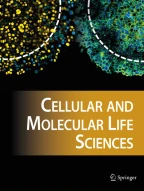2087Accesses
297Citations
22 Altmetric
2Mentions
Abstract.
Chicken avidin and bacterial streptavidin, (strept)avidin, are proteins widely utilized in a number of applications in life science, ranging from purification and labeling techniques to diagnostics, and from targeted drug delivery to nanotechnology. (Strept)avidin-biotin technology relies on the extremely tight and specific affinity between (strept)avidin and biotin (dissociation constant,Kd≈10−14–10−16 M). (Strept)avidins are also exceptionally stable proteins. To study their ligand binding and stability characteristics, the two proteins have been extensively modified both chemically and genetically. There are excellent accounts of this technology and chemically modified (strept)avidins, but no comprehensive reviews exist concerning genetically engineered (strept)avidins. To fill this gap, we here go through the genetically engineered (strept)avidins, summarizing how these constructs were designed and how they have improved our understanding of the structural and functional characteristics of these proteins, and the benefits they have provided for (strept)avidin-biotin technology.
This is a preview of subscription content,log in via an institution to check access.
Access this article
Subscribe and save
- Starting from 10 chapters or articles per month
- Access and download chapters and articles from more than 300k books and 2,500 journals
- Cancel anytime
Buy Now
Price includes VAT (Japan)
Instant access to the full article PDF.
Similar content being viewed by others
Explore related subjects
Discover the latest articles, books and news in related subjects, suggested using machine learning.Author information
Authors and Affiliations
A. I. Virtanen Institute, Department of Molecular Medicine, University of Kuopio, P. O. Box 1627, 70211, Kuopio, Finland
O. H. Laitinen
Department of Materials, ETH Zürich, Hönggerberg, 8093, Zürich, Switzerland
V. P. Hytönen
Institute of Medical Technology, University of Tampere, Biokatu 6, 33014, Finland
H. R. Nordlund & M. S. Kulomaa
- O. H. Laitinen
Search author on:PubMed Google Scholar
- V. P. Hytönen
Search author on:PubMed Google Scholar
- H. R. Nordlund
Search author on:PubMed Google Scholar
- M. S. Kulomaa
Search author on:PubMed Google Scholar
Corresponding author
Correspondence toM. S. Kulomaa.
Additional information
Received 22 June 2006; received after revision 1 August 2006; accepted 21 September 2006
Rights and permissions
About this article
Cite this article
Laitinen, O.H., Hytönen, V.P., Nordlund, H.R.et al. Genetically engineered avidins and streptavidins.Cell. Mol. Life Sci.63, 2992–3017 (2006). https://doi.org/10.1007/s00018-006-6288-z
Published:
Issue date:
Share this article
Anyone you share the following link with will be able to read this content:
Sorry, a shareable link is not currently available for this article.
Provided by the Springer Nature SharedIt content-sharing initiative



